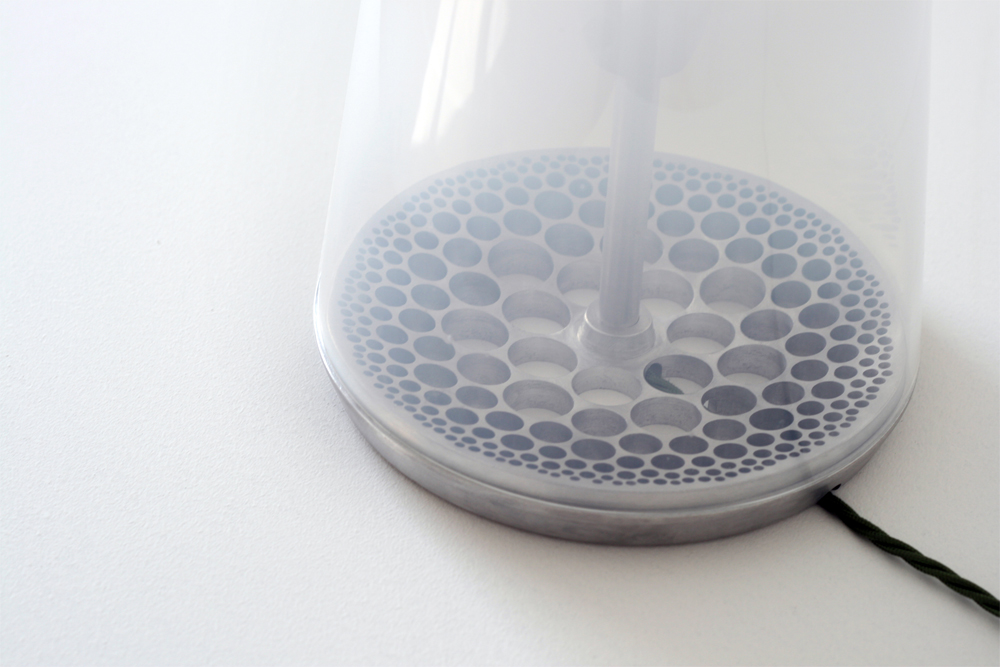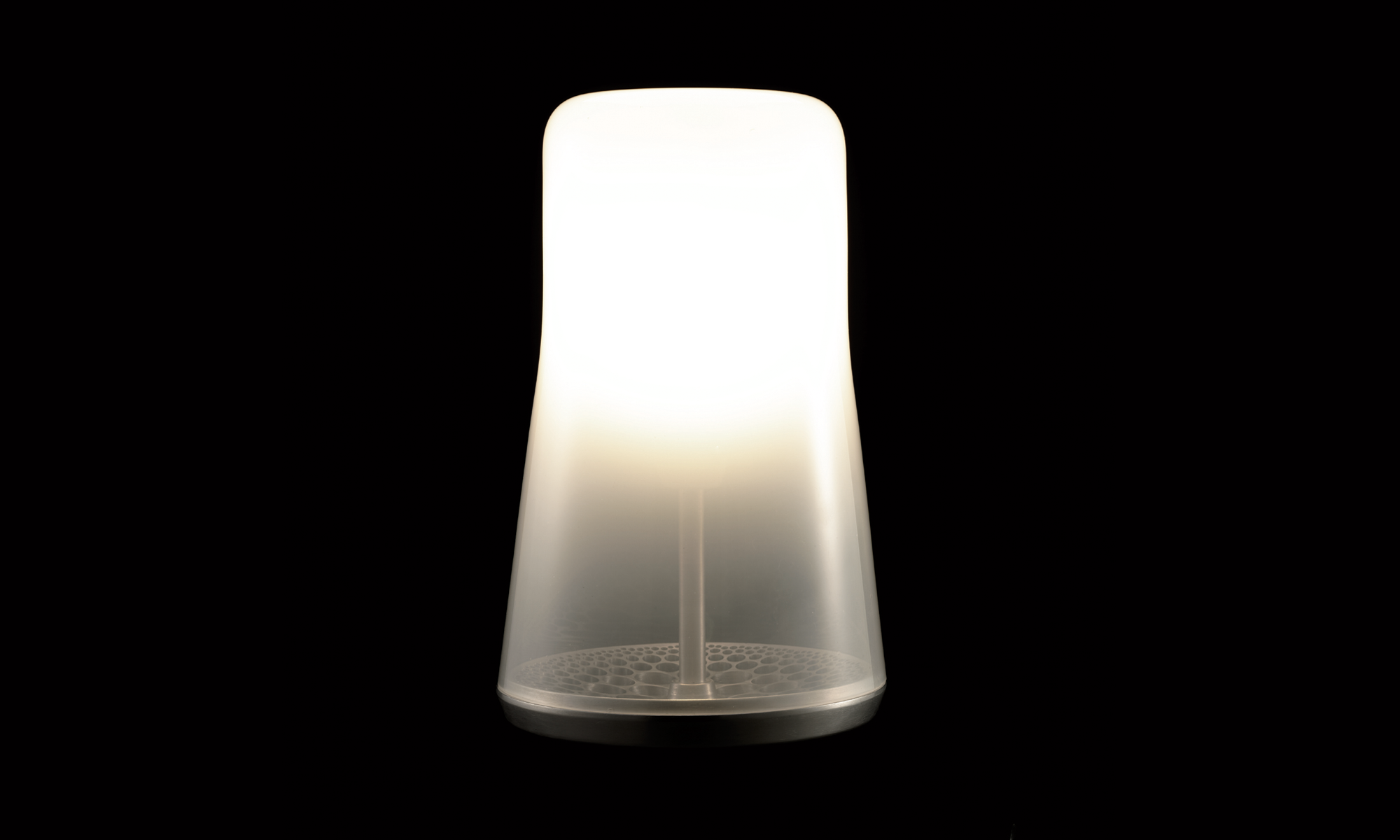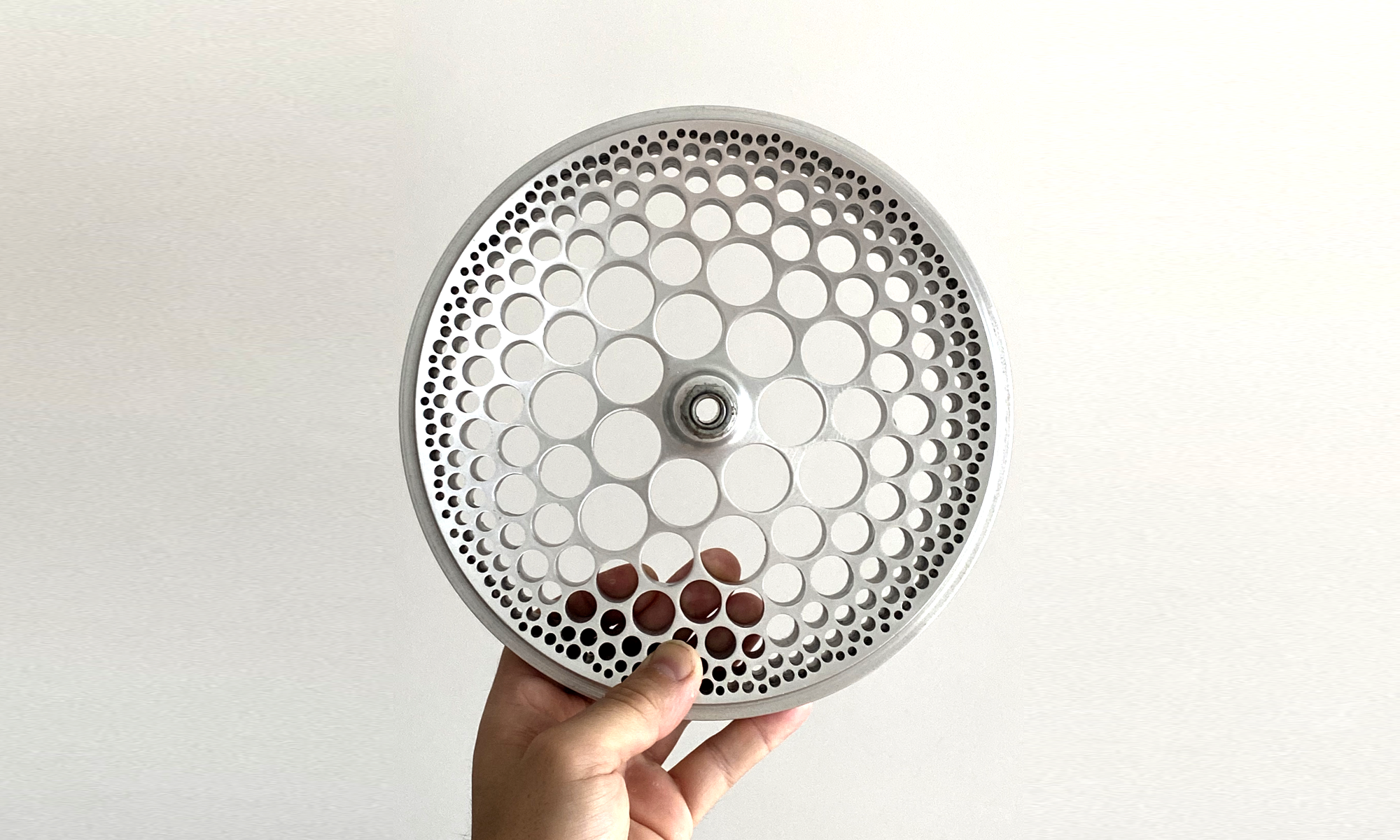The inspiration for this product was to mix materials and technology from contrasting geographical regions, fusing technology and craft.
Hand blown glass is a traditional technique dating back to the Roman Empire, and the technology used here is just as old.
The colour gradient of the glass is imperative to the success of the product as the white colour offers a diffuser between eyes and bulb, while the clear bottom half allows light to disburse.

Contrastingly, the base was machined to specifically fit the glass hand made shade. It was made by a computer controlled CNC machine in China from a 3D file sent via email.
The holes in the base create a pattern to capture the reflections of the light. In this way, I’ve tried to keep the decorative elements subtle on a fairly pure form.
The pattern itself is based on hyperbolic tessellation geometries and the name of the lamp is derived from the French mathematician who first described these geometries.
So, after living in Europe and Asia, I wanted to tell a story about the classic techniques of Europe, and the modern technologies of Asian production in one product. The lamp was designed whilst on an Australian Council Artist Residency in Milan.

I realise there are many products which contain components from both China and Italy, but I’m attempting to celebrate this, making one part purely by hand and eye, the other purely by machine and email.
Then the form followed this manifesto: a fairly pure table lamp, with decorative technology injected into small areas, uniting contrasting elements in a harmonious way and only assembled by gravity.
This prototype was shown at Milan Salone in 2012 with eoq design.

